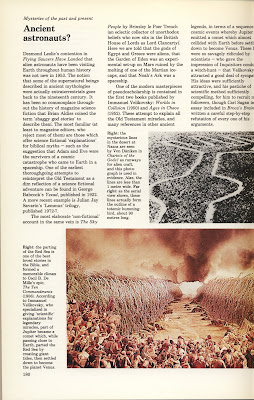Book Review: 'The Kar-Chee Reign' and 'Rogue Dragon' by Avram Davidson
2 / 5 Stars
‘The Kar-Chee Reign’ first saw print in 1966 as part of Ace Double G-574, with LeGuin’s ‘Rocannon’s World’. The sequel ‘Rogue Dragon' appeared the same year. This 1979 Ace paperback (377 pp. ) provides both novels in one volume, albeit a volume designed to be marketed – somewhat deceptively - to the fantasy book-buying public. The cover illustration is by Olivia (De Berardinis).
'The Kar-Chee Reign' is set on Earth in the far future; most of the planet’s population has since emigrated to other star systems, and memories of the home world have long since faded. What little humanity remains on the depleted planet exists at a medieval level of technology. A race of insect-like aliens, the Kar-Chee, have settled on the Earth to mine the few minerals and metals still within its crust; their advanced digging technologies regularly subject the planet’s surface to destructive geologic upheavals. To the Kar-Chee, humans are little more than annoying vermin, to be hunted and kept in order by another race of aliens, the ‘dragons’ of the book’s title.
Liam is an intelligent young man living with his tribe on an island chain near the present-day British Isles. When a Kar-Chee attack forces him to flee his settlement, he begins to question the passive fatalism that has marked human interactions with the Kar-Chee since time immemorial. Together with other young men from his adopted home, Liam embarks on a fateful mission to penetrate the vast mining operation of the Kar-Chee, his goal to discover what he can about the alien invaders. And maybe to find a weapon that can bring down the dragons and set humanity free….
‘Rogue Dragon’ is set generations after the events of ‘Reign’. Earth has been rediscovered by the colony worlds and converted into one giant ‘fantasy island’, where aristocrats from around the Federation come to join Hunt Clubs formed to stalk the Kar-Chee dragons amid the vast forests lying outside the few larger civilized areas. Shouldering high-tech blunderbusses, and accompanied by banner-waving teams of local recruits, parties of wealthy gentlemen can have a bit of excitement and drama on the Hunt, in between necessary bouts of idleness and repose.
Jon-Joras, a young aide-de-camp, is sent to Earth to make arrangements for a hunting trip by his lord and master, Federation legate Por-Paulo. When an introductory dragon hunt goes awry, Jon-Joras abruptly finds himself lost in the wilds and embarking on a series of encounters with various groups of crude, and often violent, locals.
Jon-Joras gradually comes to realize that the native Earth dwellers are less than pleased to see their territory reduced to a playground for wealthy off-worlders. There are conspiracies at work among these disgruntled peasants, and a mystery centered on the off-limits region of The Bosky Forest, where, it is rumored, the most lethal of the dragons yet live….
‘Reign’ is the better of the two novels. It's a serviceable SF adventure, if not particularly original in concept. ‘Rogue’, on the other hand, suffers from too-slow pacing and contrived plotting.
Both novels feature Davidson’s uniquely wordy prose style. This style is tolerable when presented in the form of Davidson's short stories, but in the context of novels, it tires rather quickly. Readers will encounter plenty of sentences with labored syntax, and words such as ‘epithalamion’ (a wedding poem or toast), ‘eructation’ (burping), ‘fructifying’ (to make fruitful or productive), ‘mulcted’ (to obtain by trickery), and ‘pumbled’ (which may not be a ‘real’ word to start with).
Despite what the book’s cover may imply, neither ‘Reign’ and ‘Rogue’ are fantasy novels per se, and as examples of mid-60s SF, they are unremarkable. Avram Davidson fans might find these novels rewarding, but others likely will not.

































































